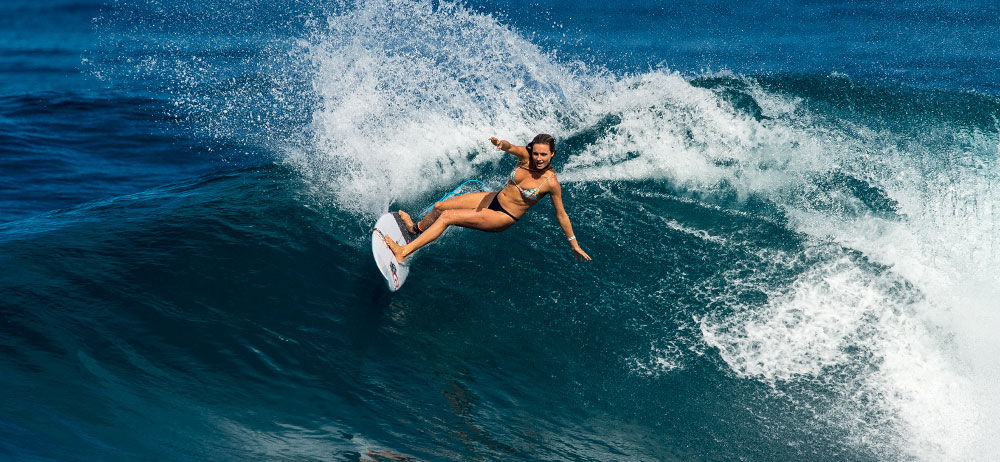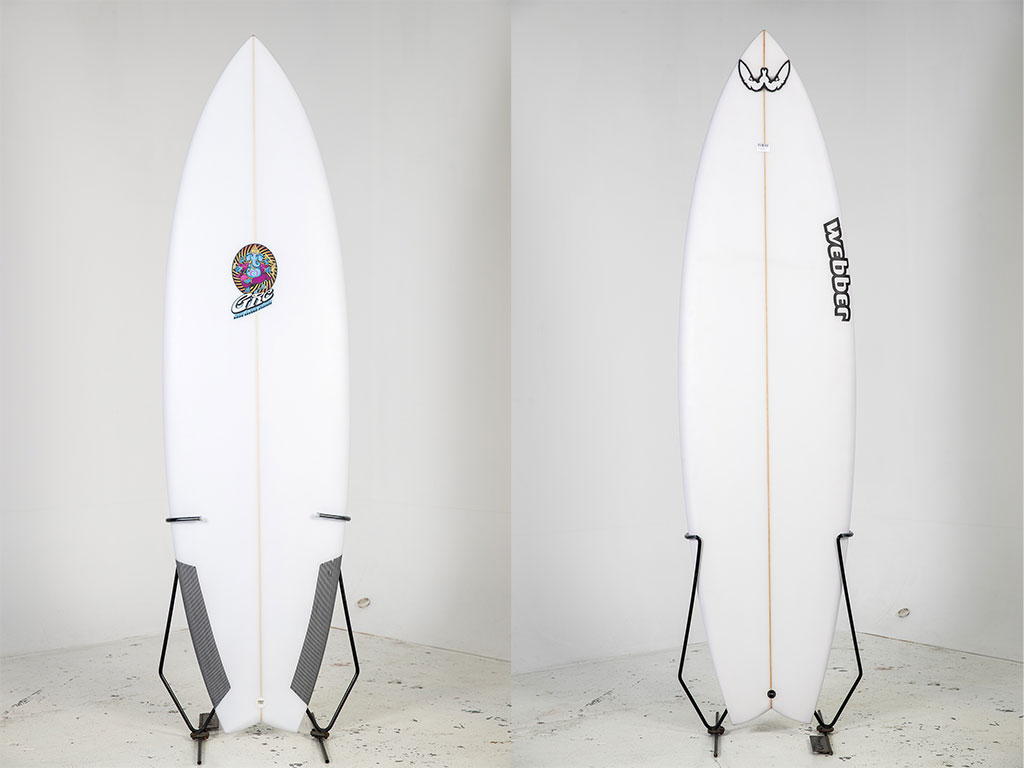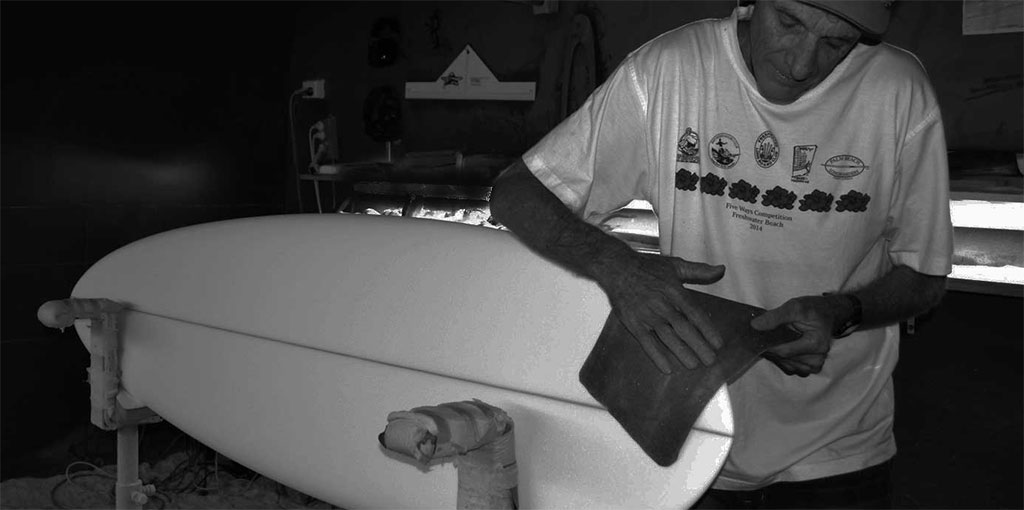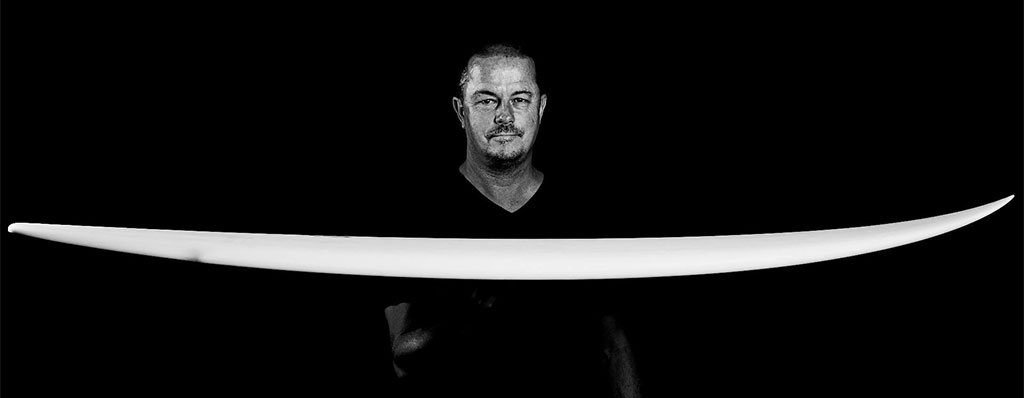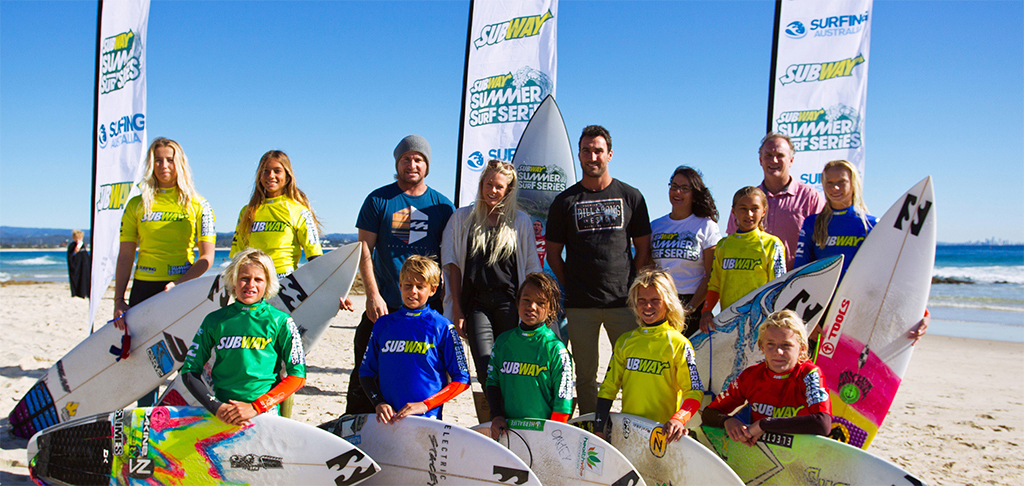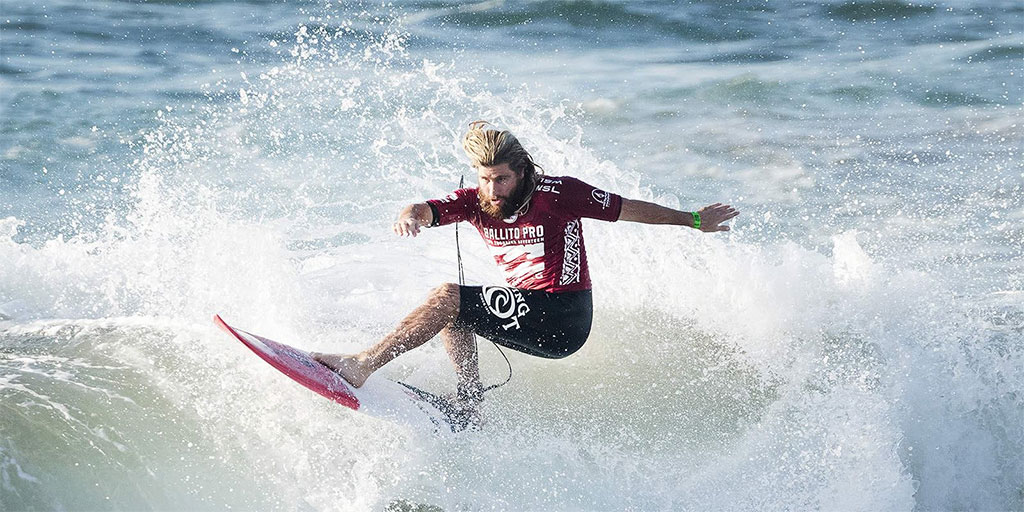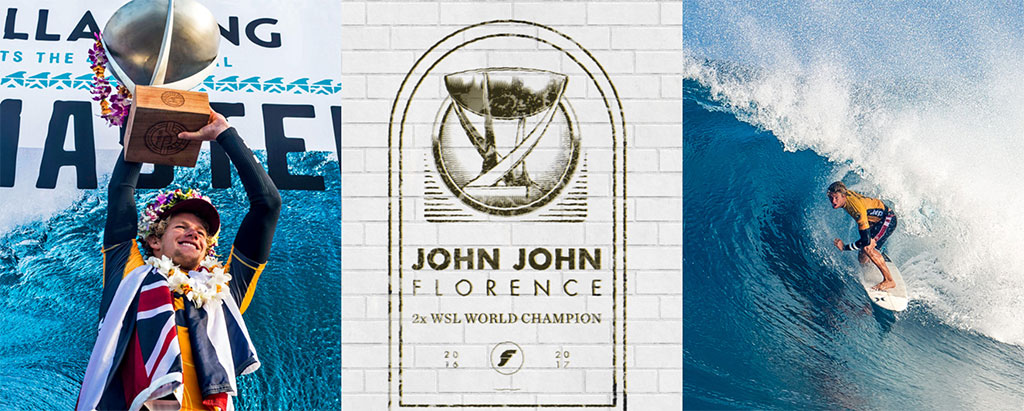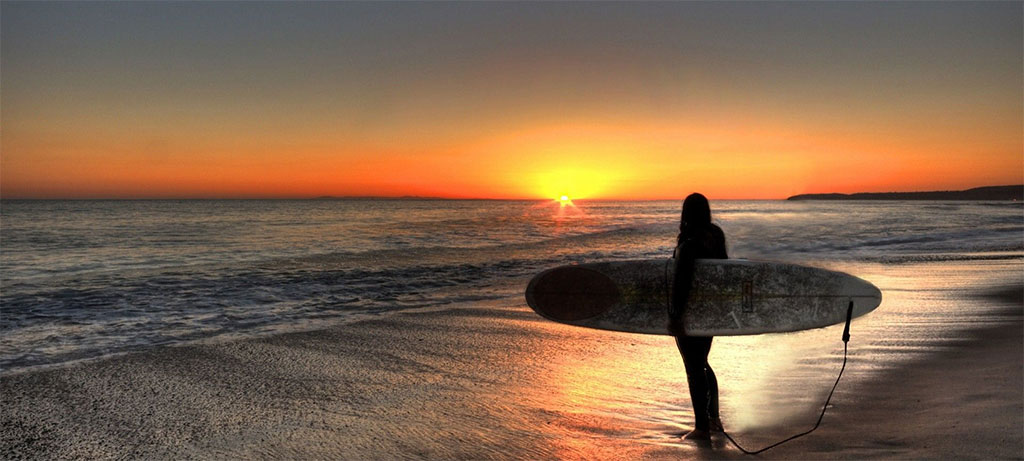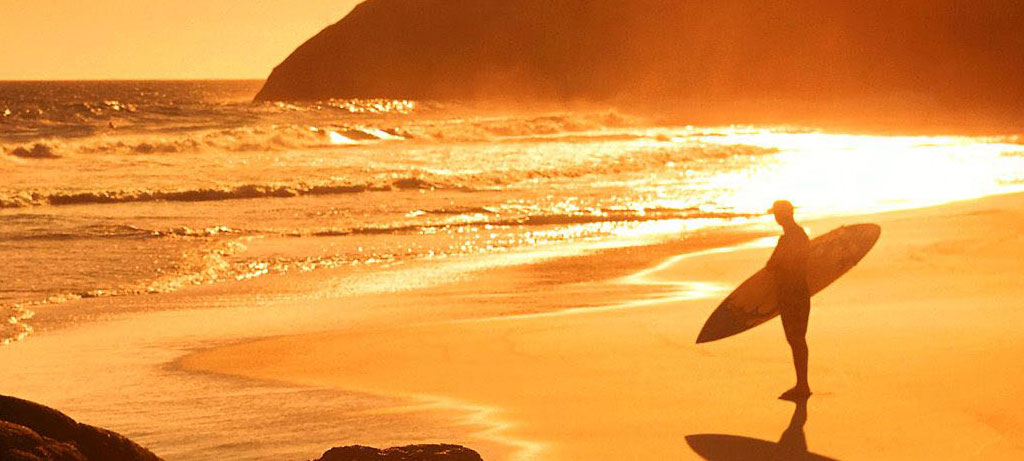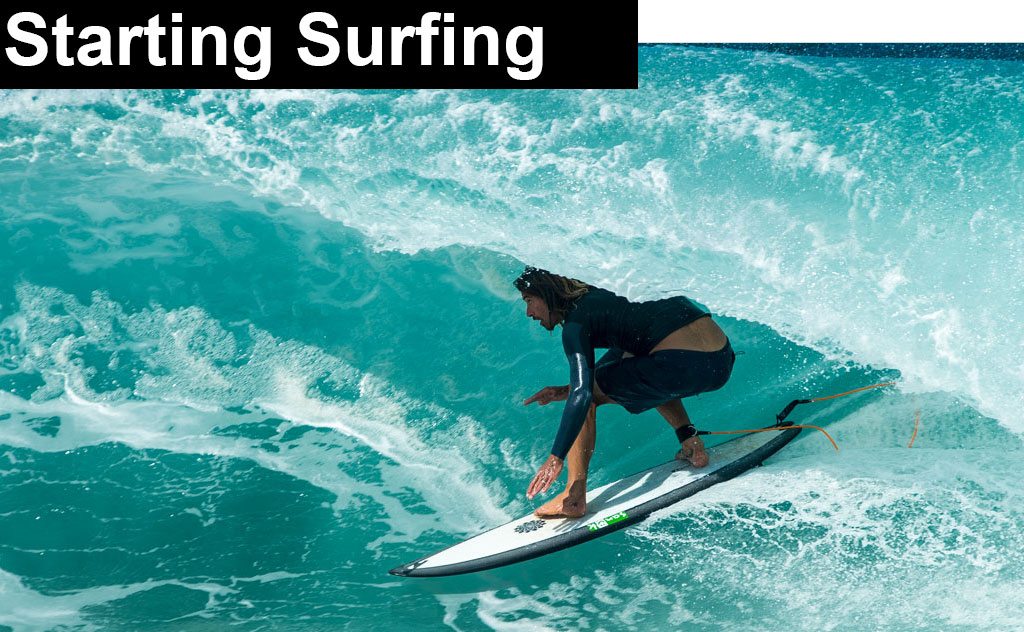
Surfing
Surfing is the most fantastic sport and lifestyle and it’s great to become a surfer. However there’s often a big difference between what you imagine starting surfing to be like, to what it actually is like.
In this second part of our article we check what’s involved, the best gear and approach, for you to have fun going surfing.
To go to the first part of our Surfing article click here
Step Six – Are You a Longboarder or Shortboarder
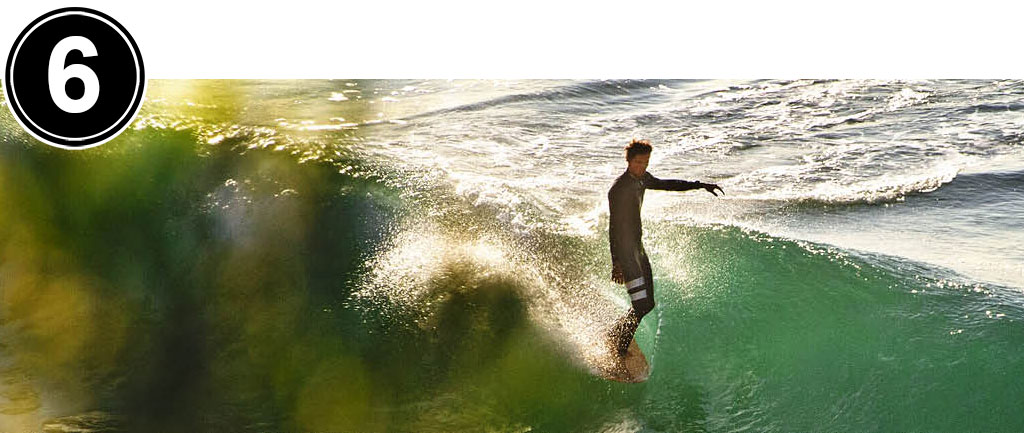
Once you’re competent on your softboard you can decide, do you want to go on the styling longboard path, above? Or the dynamic shortboard path, below?
Once you know you you’re going to be a surfer, competently getting to your feet and surfing on your softboard, the next step is to upgrade your board. Here comes another fork in the road, where you have to make a decision.
How Do You See Yourself Surfing?
Do you see yourself as a longboard surfer cruising on long rolling walls? Or as a shortboard surfer, carving up the wave, smashing sections? There are big differences involved in riding longboards and shortboards. They are two different paths.
Longboard
A longboard surfs similar to a softboard doing longer drawn out turns. Until you become very proficient on a longboard you are typically going along the wave and turning in longer arcs. The longboard path in that longboards are easier to paddle, easier to get to your feet on. So they’re less demanding and will yield faster results.
Shortboard
Going on the shortboard path and taking the step of downsizing you are aiming to do short arc and more dynamic turns. The shortboard path is physically demanding. To surf like a Pro, or just to be competent, on a shortboard will take a lot of commitment, physical and mental fitness.
How do you see yourself? What style of surfer will you be? Longboard or shortboard?
Longboard Path Upgrade Board

Several longboards that are good to progress on after your softboard
On the longboard path your next step is to get a fibreglass longboard. This will be an easy transition from your softboard as your softboard and longboard may be similar in size and volume.
The fibreglass longboard though will paddle better being easier to catch waves on. This is because, if both boards are similar good shapes, the fibreglass has less friction in the water and are generally faster shapes. Once on the wave it will glide better making for longer rides. So your whole surfing experience will step up a notch, without any effort, just by changing your softboard to a fibreglass longboard.
Shortboard Path Upgrade Board

A mini-mal, on the left, might not be seen as a shortboard but it’s what you can use in your transition to a shortboard. The other option on the right is a hybrid board. This is a full volumed board, looking more like a shortboard. The full volume up front helps your paddling, wave catching and stability. The narrower tail helps with starting carving turns
Unlike on a longboard where you can take one step from a softboard to a longboard, to surf a shortboard requires more transition steps trying more boards.
Going from your long softboard you can go to a fibreglass board that is shorter. To make a more gradual transition this can be a mini-mal. It’s a similar shape to a longboard, with full nose and straight outline, but reduced in length and volume. It makes the step towards a shortboard easier.
If you want a transition board that looks more like a shortboard, then check out a Hybrid or Fish surfboard.
Hybrid & Fish Boards

A more shortboard looking alternative is the Hybrid and a Fish style board. These boards have a nose more similar to a shortboard but it’s still full so giving better paddling and wave catching. They are wider through the middle so you get good flotation and speed. On the Hyrbid the narrower tail helps with more carving turning
Once you are competent on a mini-mal, the shortboard path is to continue to downsize, you can progress to a shorter fibreglass board. This can be a Hybrid or Fish style board. Both these style boards have a more drawn in nose than a mini-mal, starting to look more like a shortboard.
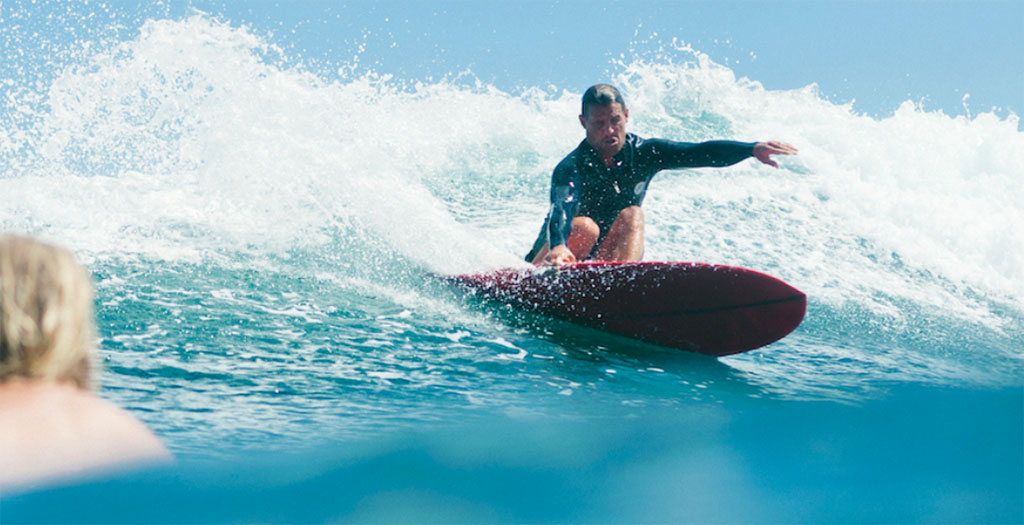
Surfing on a Mini-mal, Hyrbid or fish becomes more dynamic than on a longboard. Note the surfer above is riding a shorter Fish style board with a full nose
These boards will still give you good paddling and wave catching and be easier to turn than a mini-mal. The reason you don’t go straight to a shortboard like the Pros ride is that these transition boards are still much easier to get around on in the surf. The Hybrid and Fish are easy to paddle and catch waves and you will still be having fun.
Step Seven – Competency & Approach
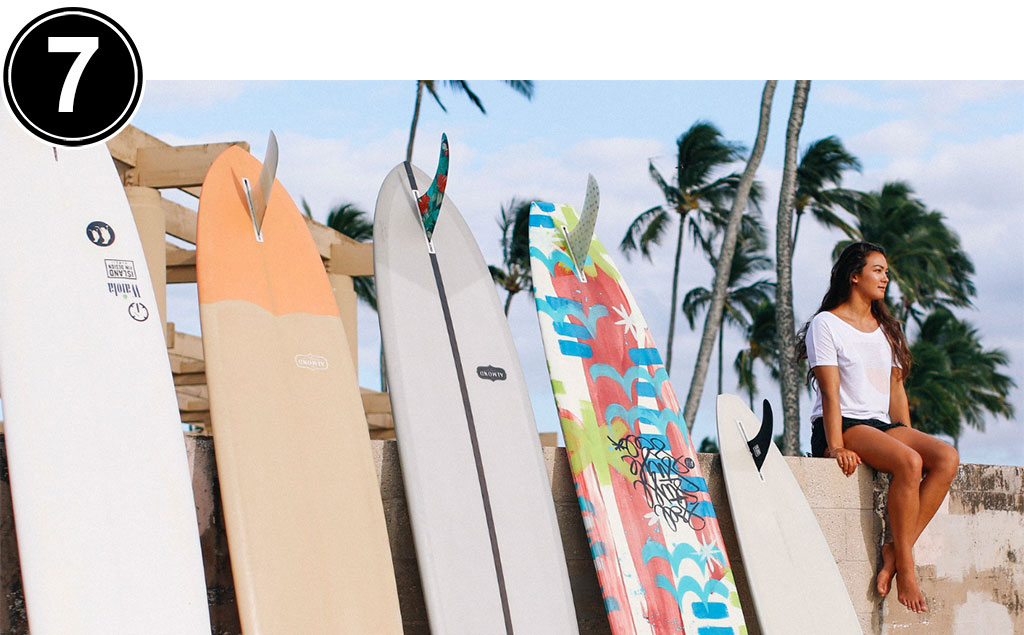
If you’re on the longboard path and you are competent on your existing longboard try other longboards
Longboard
If you’re on the longboard path then there’s not much more you need to do in this step. The more proficient you become on your longboard the more you can determine your personal style.
You may like the old school style where the board is heavy, gets momentum and cruises down the line. Alternatively there’s lightweight designs that give you speed and sensitivity for more precise carves. You can try carving or nose riding.
You can have several longboards in your quiver, a heavy old school cruiser and a lightweight flyer, and the surfing world will be yours.
Shortboard
On the shortboard route we stopped at the Hybrid and Fish. This style board will allow you to do shorter arc turns. This style board still has volume so paddling and wave catching is easier.
However short boarding surfing diverges greatly from longboarding, not just in your board, but your approach in the water, your approach to the wave.
Let’s check this out.
Shortboard Approach To The Wave
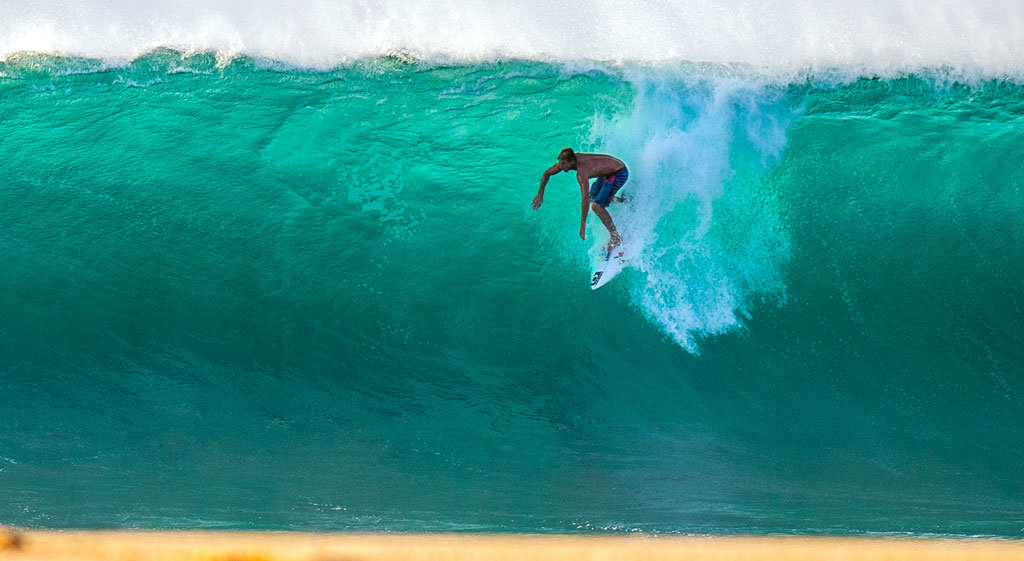
Check where Sebastian Zietz is catching this wave on his shortboard. This is an extreme example but shows that the wave is being caught under the lip. The wave is just about to break. His position is critical. Going down the shorboard path means a whole new approach to wave catching and riding. It’s not just riding a shorter board
Progressing in your shortboard surfing means going to shorter more manoeuvrable shortboards. On these style boards the whole wave catching equation starts to change. It’s not just that the shorter board becomes harder to paddle hence harder to get waves.
Shortboard surfing requires a different approach. It’s about catching the wave on the peak, on the steep part of the wave. Where the wave is pitching.
To do this requires a whole new level of skill.
It needs greater ability to read the wave so you know where the wave catching position is. It needs greater wave catching ability to be able to paddle to the right position, at the right time, for catching the wave.
If you like where you are in your shortboarding, you don’t need to continue on the performance path. You can stick with the Hdybrid and Fish style boards that will still give you shortboard style performance. These are two models from Greg Clough and Greg Webber, two of the world’s best shapers. Both these boards are super fun and will give you great performance
Your physical abilities and surf fitness, your balance, need to be at a high level to make this work. At the same time this shorter shortboard has less length and less volume. It is hard to paddle and inherently unstable so as to aid quick turns.
Going to a performance shortboard is demanding. In this next step you’ll need to start working on this type of more critical surfing approach.
Step Eight – Surf a Lot
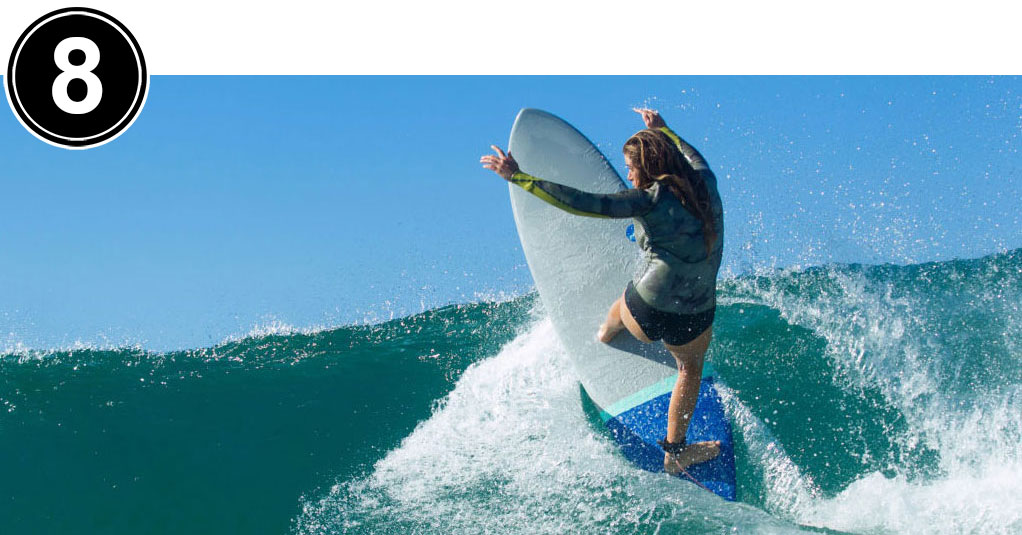
Whether on the longboard or shortboard path make sure you surf as much as you can
This stage may sound like the easiest stage but getting into the surf, surfing a lot, can take commitment and planning. It means getting up early, or surfing late. Whether it’s sunny or rainy, whether the waves are good or not so good. Do your best to surf a lot.
If you haven’t already, at this stage whether on the longboard or shortboard path you should upgrade your wetsuit. If you’re surfing a lot, early mornings before sunrise or late afternoons onto dark you need to be comfortable to perform your best.
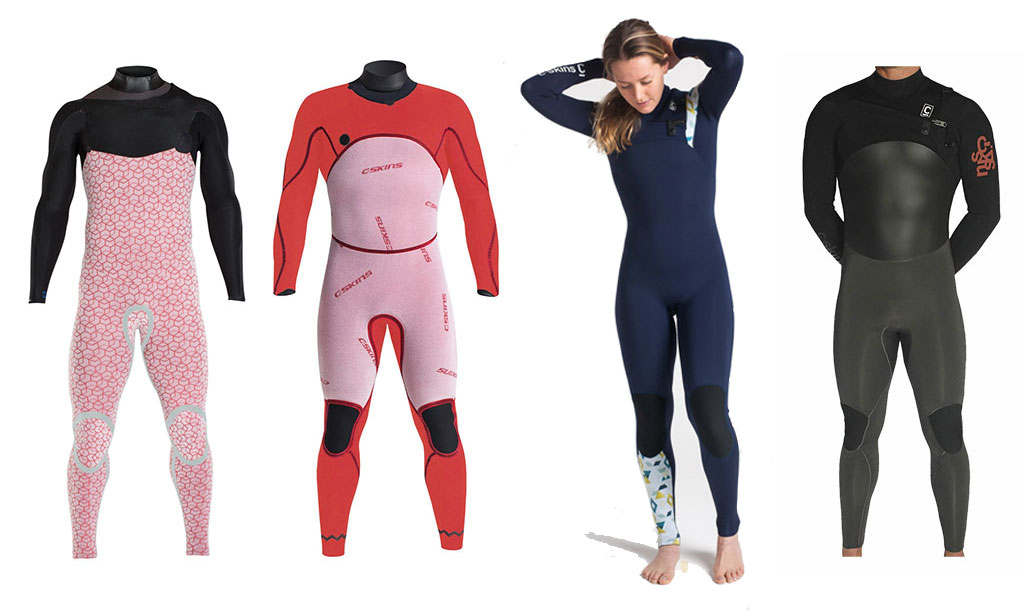
Your basic wetsuit can be upgraded to a wetsuit giving you greater comfort for early, late, and a lot of surfs. You also can get better performance from more flexible neoprene construction so you can paddle easier and do bigger moves
If you’ve got to Stage Eight in your surfing progression then a high quality wetsuit will give you greater performance with lighter more flexible neoprene construction. You also get great comfort with a plush lining.
Step Nine – Enjoy & Progress
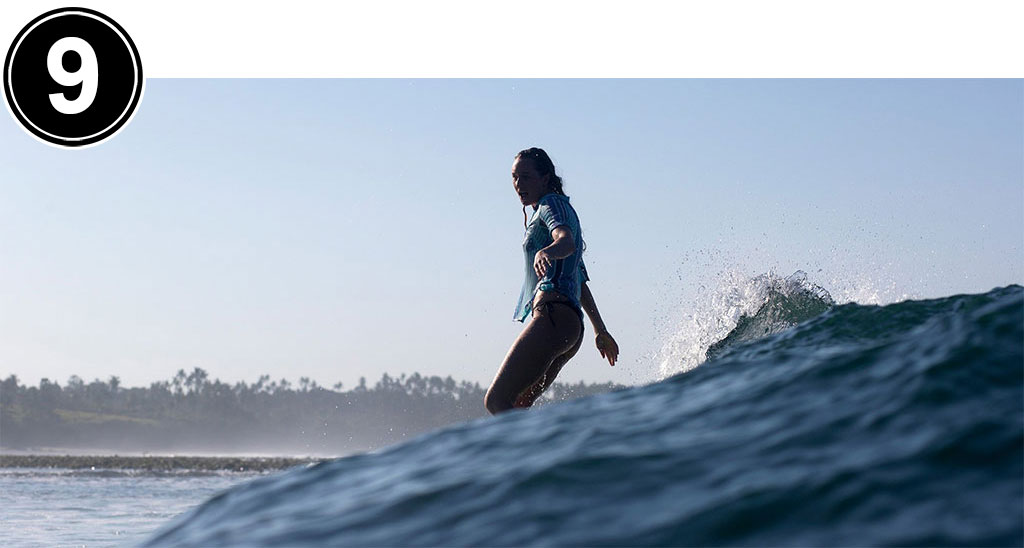
Longboarding is all about enjoying yourself. Become competent. Let your own style express itself. Try different boards. Surf different breaks
Longboard
If you’ve chosen the longboard path this can be the ideal stage. You’re surfing, you’ve got good boards. It can all be about letting your personal style, your personal expression come through in your surfing.
Shortboard
If you’ve chosen the shortboard path, it’s time to downsize to another board. You may keep your Hybrid and Fish. However at this stage, to hone your shortboard skill, you should become very familiar with and competent on the performance shortboard.
This means finding a good performance shortboard design and sticking with it. Don’t go changing things too much. Even though fins are changeable you want to keep the way your board feels consistent so aiding your progression.
Build up your confidence and competence so you can surf without having to consciously think about where you are in the water regards catching the wave peak, then where you are on the wave regards the wave power. Work on your critical approach to the waves.
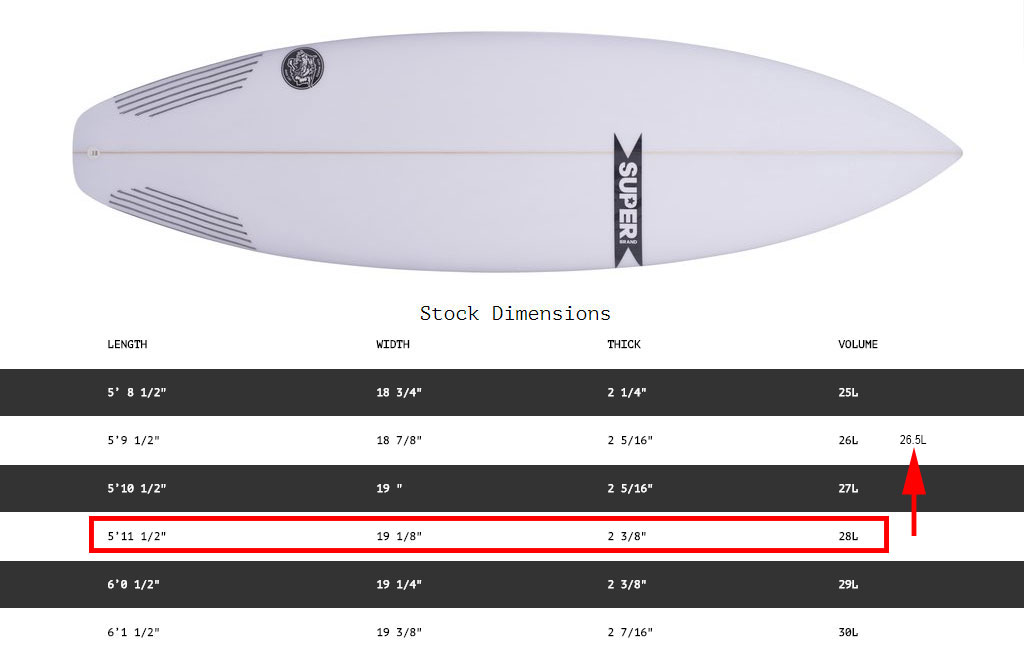
Refine your shortboard. Work with one model with only slight changes. For example reducing tail width or dropping volume to determine what works best for you. Reductions in volume will increase sensitivity, increasing your performance
If you’re a longboarder or shortboarder, at this stage you should be surfing everyday or as much as you can. Surfing everyday means learning to master whatever the waves and the ocean are doing. You’ll learn to surf small and big waves, smooth and sloppy waves. You’ll be a real surfer.
Mix It Up
Don’t let your surfing stagnate. Even if you’re happy how you’re surfing, and especially if you’re not, try more boards.
Get new boards but try to keep any board you feel is special so you can always pull it out in the future. There are magic exceptional boards. Many Pros keep their magic boards, when they find one, forever. They no longer surf them day to day and only pull them out for competitive events.
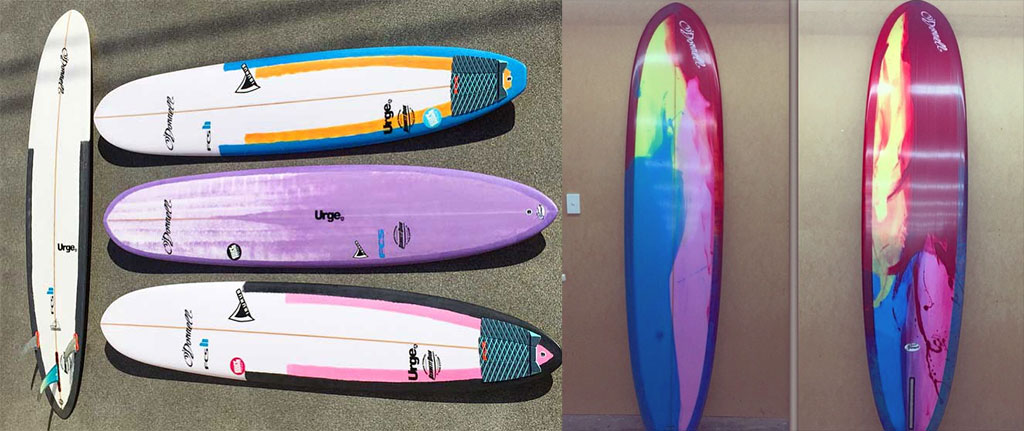
Performance longboards, above, may look like other longboards but their construction and design are high performance. These are shaped by master longboard shaper Steve O’Donnell, below
Longboard
For a longboarder, there’s advanced longboards. These look like other longboards. They are however constructed with lighter foam and lighter fibreglass. They have volume distribution and have a curve to them that makes them super responsive. It is worthwhile if you’ve gone the longboard path to try a performance longboard at some point.
Find yourself a shaper. Someone you can talk to who will understand your level of surfing and can shape you an ongoing evolution of boards to help you progress. Above is Greg Webber, one of the greatest shapers holding a piece of foam he’s crafted into a magic board
Shortboard
For a shortboarder this step involves trying different shortboards. Try to find and work with a shaper. This is someone who should hopefully be able to see you surf. Or at a minimum understand how you surf.
The shaper can then shape boards specifically for you on a consistent theme. Not just a board, but boards. As you progress you will get boards that are magic, that you perform great on. Others boards may not be so good. So make sure you hang on to boards that work for you.
Step Ten – Competition?
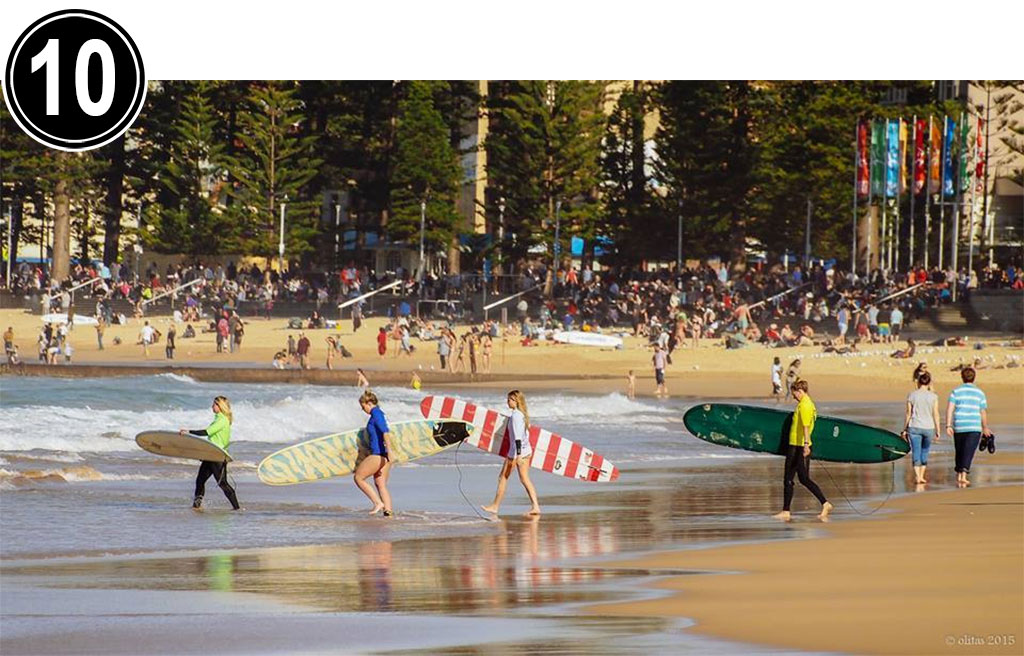
Have you thought of surfing competitively? There’s plenty of competitions for longboarders and shortboarders. Competition, individually or as a team, brings out a lot of great characteristics in your surfing. Competitive surfing can be organised at your local beach or as the pic below indicates with Surfing Australia
At this stage, longboarder or shortboarder, you can decide if you want to match your skill among other surfers.
This could be joining your local boardriders club and competing in organised competitions trying to out surf your peeps. Most boardriders clubs have age groups and skill divisions catering for all surfers. There’s also clubs for longboarders and shortboarders.
Be aware, competing brings a whole new vibe to your surfing.
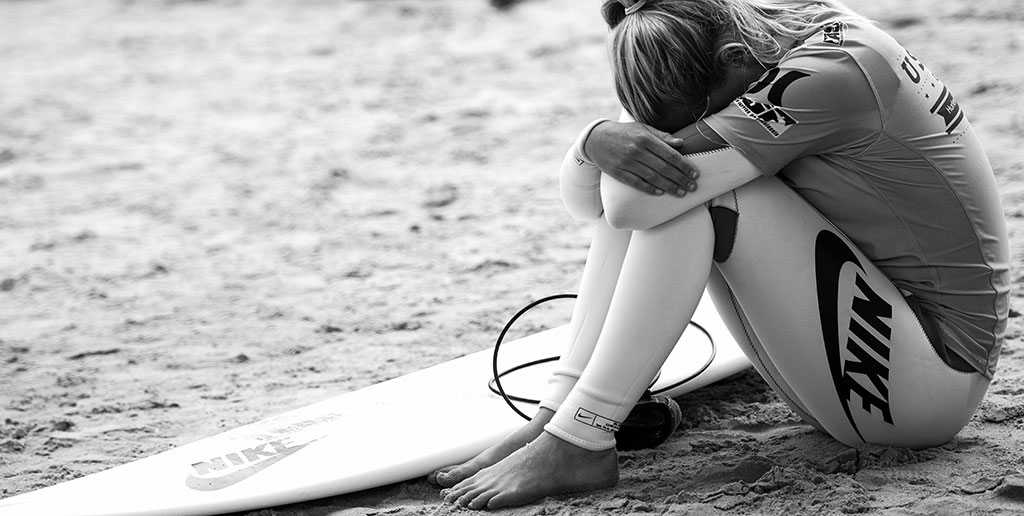
There’s pressures in competitive surfing
If you go too hard into competition, on one side it can change your enjoyment of riding waves. Part of competition is to be able to repeat moves whenever required. So when you’re surfing you’re constantly thinking how you could have done a move better. If the waves don’t allow you to practice and perform, because they’re too small or sloppy, this can lead to surfing frustration.
Competitive surfing can be extremely frustrating in itself as luck more than skill often seems to play a big part. In a set timeframe of say a 20 minute heat you may just not get the waves you need to demonstrate your skill and so not get a result that matches your skill. Skill that you’ve put hours and hours of hard work and practice into. No one will know how well you surf.
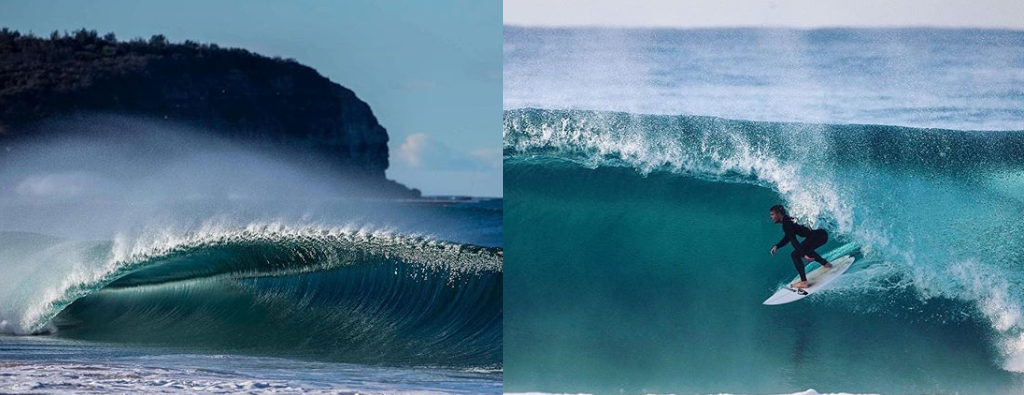
Surfing competitively helps your free surfing. When a perfect wave comes you know how to handle it, how to perform the best on it. How not to waste it
On the positive side, competition teaches you to value a wave. If you think about it, how often do you see a perfect, or close to perfect wave? So when one comes your way in the surf, competition teaches you to do your best with it.
There’s lots of great competition drills, practice routines, that help you get a lot more out of your surfing. One great competition guide is not to paddle for a wave you don’t want or can’t catch. How often have you half-paddled for a wave only to turn around and miss an even better one coming behind?
If a wave’s closing out, there’s still moves you can perform to utilise your skill, to utilise the most of the wave
Competition also opens you up to understand all the different moves and how they fit together in riding a wave. For example if a wave is closing out in front of you, you can do a floater to go over it, a bottom turn to go around it, or smack it, instead of just falling off.
World Champion John John Florence. A World Champion starts somewhere
If you do well in your local competitions there’s a whole world of surfing out there, including the World Qualifying Series and World Surf League ahead of you. Who knows you could become the next World Champion. They all started somewhere!
At Manly Surfboards we can help you all the way on your longboard and shortboard surfing path.

